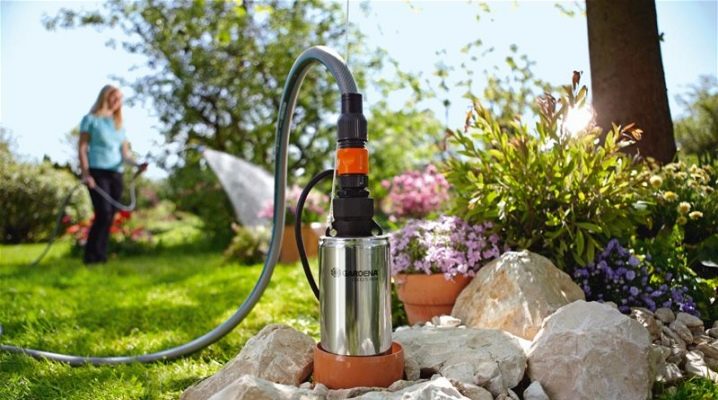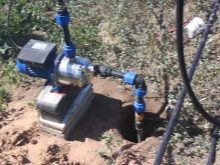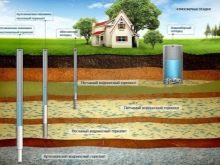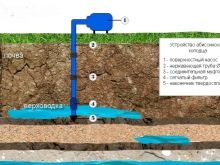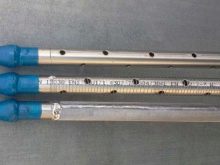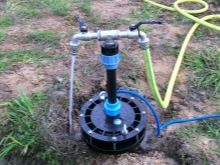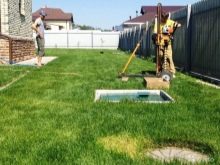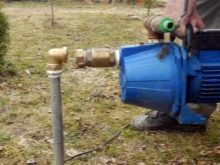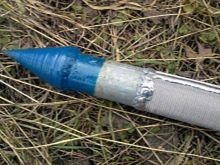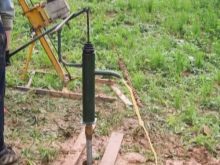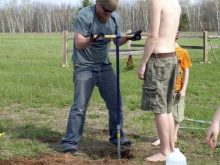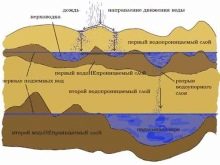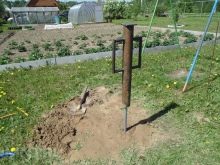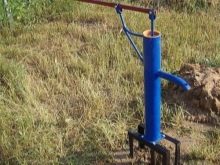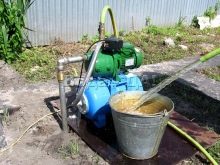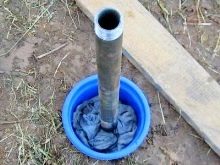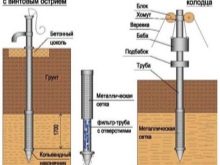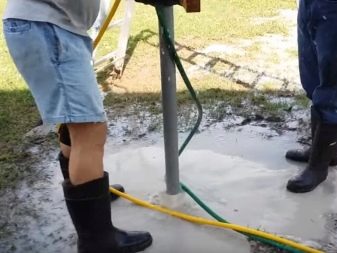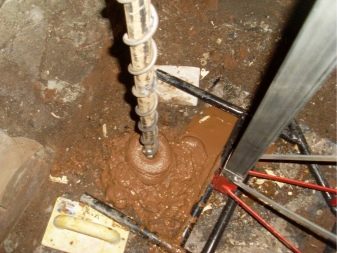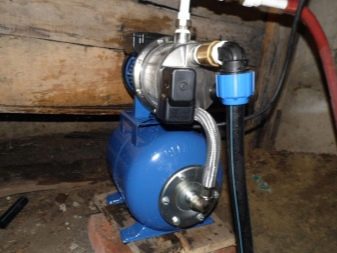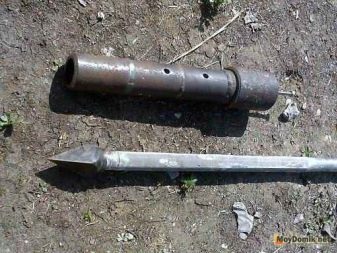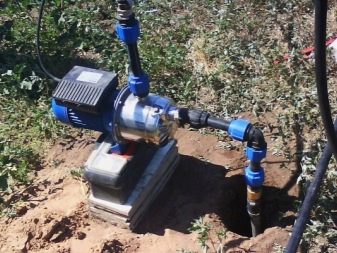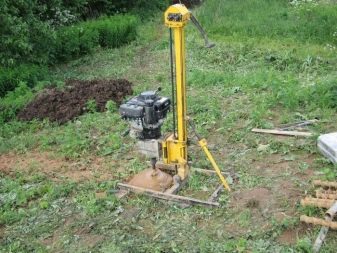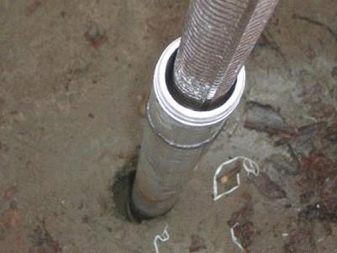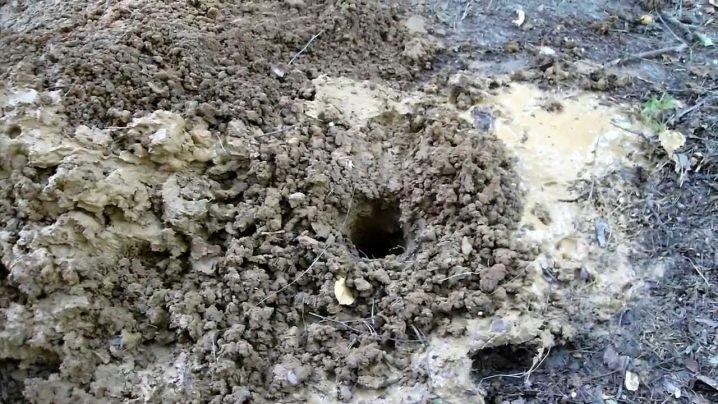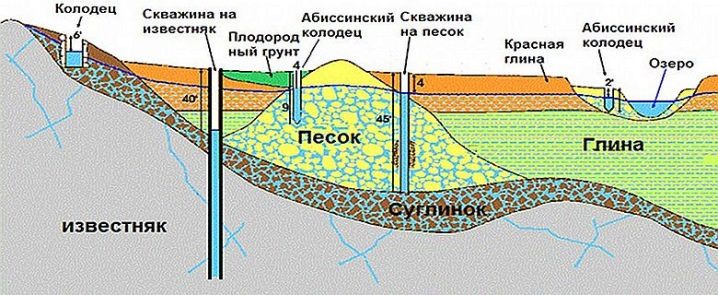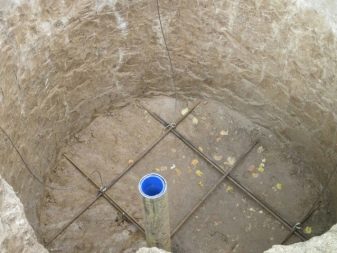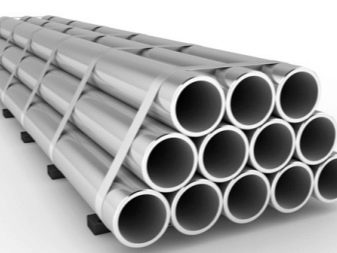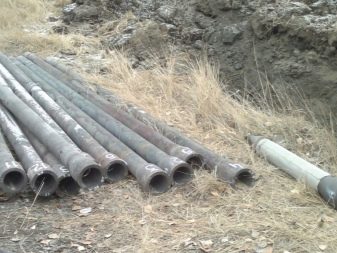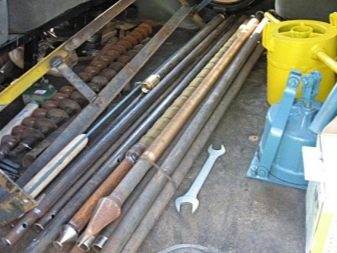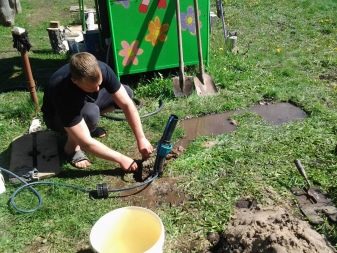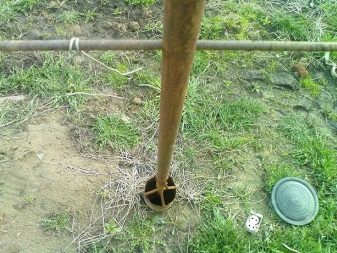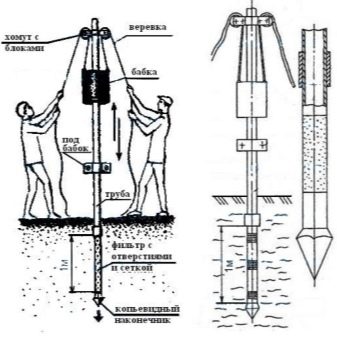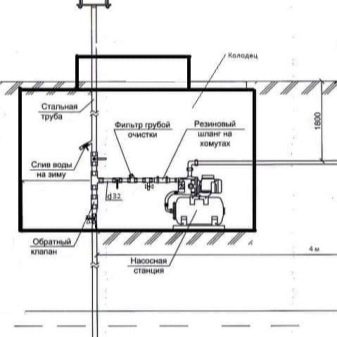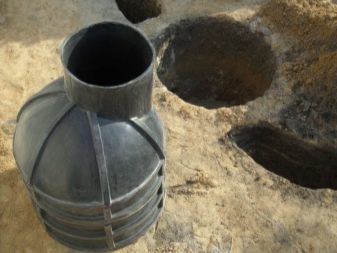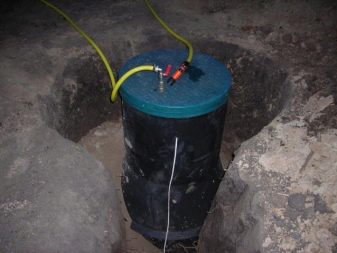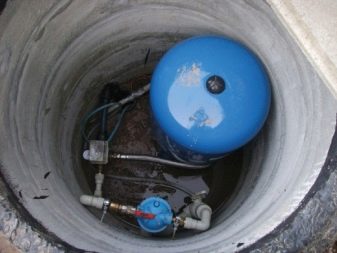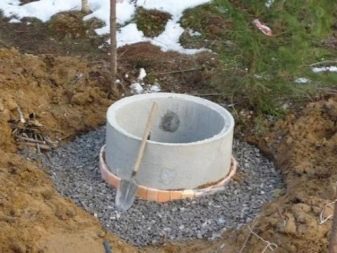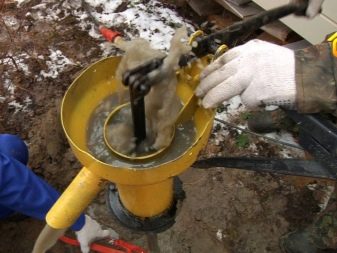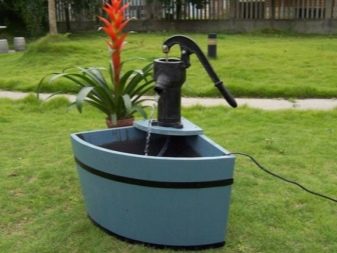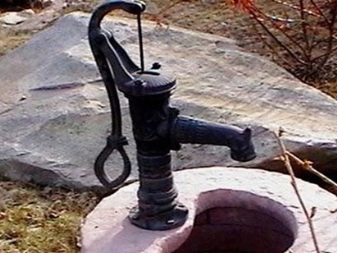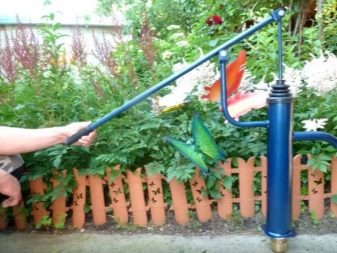Abyssinian well: how to conduct autonomous water supply on the site?
An autonomous water supply system for a private estate is expensive. But in the absence of central water supply in the private sector, this task still has to be solved. To conduct on the site autonomous water supply is possible, and inexpensive. Abyssinian well will allow to realize the idea.
What it is?
The device, called the Abyssinian well or the Abyssinian well, is a simple and inexpensive source that will provide water for a country house or summer garden. This design, though small in size, is suitable for winter use.
Placing a well on this type of water must meet certain standards. For the construction of the facility does not require a set of specialized equipment, rather simple equipment.
The Abyssinian well is a metal or plastic pipe with an approximate volume of 2 to 4 cm. The pipe is installed in an aquifer, which can be located at a depth of 10 to 15 meters. The lower part of the pipe is equipped with a filter. At the top of the pipe is mounted a pump that must be connected to electricity.
The performance of the Abyssinian well is related to the capabilities of the aquifer. Features of the system is that it can be mounted on the suburban areas without permanent residence. For installation will not require heavy equipment. At arrangement of a well the fertile layer of soil will not suffer.
It is believed that this method of resource extraction was invented by the British back in the XIX century. The popularity of the Abyssinian well has not diminished since. The method is in demand for arranging water supply on the suburban areas.
In addition, a variety of options for arranging Abyssinian wells appeared. For example, a driving method or drilling method is used. Experts associate the choice of method with the conditions at the site.In particular, with the qualities of the available soil.
The features of the soil in a particular plot should be familiar to gardeners. If the necessary information is not available, you can check with your neighbors. There are also scientific ways to learn. Usually Abyssinian wells are drilled in areas where soils are made of sand or gravel.
Still allowed the presence of sandy soils of medium grain. Extraction of water through similar soil layers will not be difficult. The development of Abyssinian wells on rocky or loamy soils is strictly not recommended.
In such places will require the use of special equipment. However, experts practically do not use drilling without casing in practice. Casing well variants usually settle down deeper. To use the source will require a license. Let's compare the characteristic features of the depths for wells used in private farms.
Depth characteristics
The Abyssinian well is also known by other names, for example:
- downhole;
- well needle;
- Abyssinian well.
The depth of the well is an important parameter on which the price of work depends. Especially since aquifers are present at different depths. It is believed that Russia is rich in artesian water. These are useful resources that are under waterproof layers under hydraulic pressure. The seams are characterized by the presence of hydraulic pressure, so the extraction of water from them is caused by many difficulties.
In addition to the artesian aquifer, there are groundwater, which lie at a lesser depth. Most often, groundwater can be found at a depth of 10 meters, in some areas it is enough to go down to two meters.
Groundwater reserves are replenished by rain or melt water. It is believed that along with the liquid they get dirt, and sometimes fertilizer from the fields. With shallow wells or boreholes problems may arise during hot periods, because the water level at this time drops sharply.
During heavy rains in shallow wells or boreholes problems arise with overfilling. Springs from the upper layers often break out of the ground. However, the amount of fluid in these layers is quite small. Sometimes springs occur when penetration of impermeable layers.If the water itself makes its way from the well to the surface, in some cases it simplifies its delivery to the house, in others, on the contrary, it complicates.
If the amount of water is too large, it turns out self-shedding wells. It threatens to turn the site into a swamp. Therefore, the aquifer used is of great importance for the well. With this parameter associated methods of arrangement and characteristics of the well. Each characteristic has its advantages and disadvantages.
The main advantage of the Abyssinian well is small depth. Also, users say good performance. The durability of the structure is largely related to the chemical characteristics of the aquifer. For example, users strongly recommend setting up high-quality filtering abyssines.
The homemade version will look like a galvanized thick-walled pipe 1.5 meters long with a thread on one end. The pointed tip is screwed onto the thread. The needle is better to push the soil at the desired depth. From the base of the pipe you need to leave the distance that you need under the sump on the sand.
Then, after about 5 cm, holes are drilled with a diameter of about 1 cm.The pipe section with holes must be wound with wire. Additionally useful stainless mesh with small holes. The grid must be secured with clamps. For better filtration, the pipe can be wrapped with geotextile.
The Abyssinian well is deepened more often by five meters, but it can reach up to 15. It is assumed that the water in the well should not be kept near the very bottom. The water column should be somewhere in the middle. Therefore, the depth of the well may be different, but the distance between the pump and the water mirror should not be more than 8 meters, since the water will rise by a vacuum method.
When creating a vacuum, water pushes up atmospheric pressure. Still important is the value of hydraulic resistance. Therefore, if the depth between the pump or the mirror of the water is greater, the water will not be able to rise. A dry running pump will quickly fail.
Advantages and disadvantages
Among the advantages of the Abyssinian wells are:
- Relative cheapness. Works can be made independently.
- The necessary components are commercially available.
- Fast production. The arrangement of the well in the presence of all the components will take literally a couple of hours.
- Ease of arrangement. Well needs limited space.Any area of the yard, as well as a basement or garage, will do.
- For the work does not need a special drilling equipment. Such equipment usually requires special access roads and special transport.
- Long service life. However, this statement is real only for properly equipped wells.
Minuses:
- Arrangement of the Abyssinian well is impractical in areas where there are layers of clay, limestone. Works will be economically unprofitable.
- In the pipe of small diameter, which is installed for the well, it is impossible to install a submersible pump. Therefore, for lifting water need a pumping station.
- Construction of the well is complicated if the distance to the water mirror is more than 8 meters. To arrange the pumping station, a pit with a caisson will be required, which can also be installed in a subfield of the house. From a deep aquifer, the pumping station will not be able to lift water.
Before you take on the work, you need to explore the area. On the ground you need to find out the depth of the aquifers. In addition to the choice of location, it is important to choose the time for work, as the water level varies from season to season.
Time for work and location
When developing professional projects of individual water supply, the question of choosing the season of work is usually not raised. Here and to non-specialists it is clear that drilling is best carried out in the summer season. If the homeowner does not have the opportunity to work in the summer, you have to choose another time. Experts sometimes associate the choice of the time of the year with the parameters of the future source. This takes into account the physical characteristics of the aquifer.
It is best to drill a well in the summer or fall. Work will contribute to:
- dry, stable ground;
- low rainfall;
- positive air temperature.
The water level at the source at this time will be the lowest. This will allow the use of the Abyssinian well during periods of drought. At any other time high water levels will be present.
The advantage of performing work in the summer will be a long day light. Also, the advantage will be dry land, which will absorb more of the pumped liquid. After installing the well, dirt forms. Usually it is pumped out for several hours or days.
If the autumn period without rain, you can also carry out work.At high humidity drilling is better to exclude.
The spring period is considered unsuitable for drilling. Changes in shallow aquifers during this period are due to flooding. This may lead to an erroneous determination of the location. In addition, increased pollution will be observed in the drilled mine. Dirty impurities will have to be long and intensively pumped.
In winter conditions, drilling will be difficult due to soil freezing. An Abyssinian well cannot be prepared using the drive method. However, when using a drill, an advantage arises - due to freezing, the soil in the hole will be more stable. Mine is less polluted. In some cases, in the winter is not required initial pumping. In winter, shallow aquifers are at their lowest. Accuracy of installation of the filter will be the best.
When arranging well sources, sanitary norms should be taken into account. SANPIN implies three types of established zones that are under sanitary protection. The rules are aimed at protecting surface and deep water sources from pollution.
The first zone of the security zone includes the area of underground communications.The boundaries of the first belt are at a distance of no more than 30 meters from an underground source and 50 meters when operating an unprotected water layer. Therefore, in some cases, it will be necessary to coordinate the choice of location for the well with the appropriate authorities.
The generalized requirements for selecting a site are as follows:
- At the well site, such activities as tree planting and construction should not be carried out. Do not use chemicals.
- Owners of the wells should discharge sewage into special treatment stations. When disposing of them, do not allow contamination of the surface of the sanitary zone.
- During the operation of the well should not be allowed to contaminate it.
- The area where the well is located must be fenced.
Determine the volume of the sanitary zone is simple. For the Abyssinian shallow well, this will be a 50-meter zone. For wells of deeper species, the zone will be 30 meters.
Building rules and preparation
Preparation for the work can be divided into conditional stages. Before you start drilling, you should look at the design of the abyssinka.It is extremely simple and includes a set of metal pipes, which are 1-2 meters long. The pipes are interconnected by couplings. For the bottom of the well, through which the water is taken, a filter tube will be required. The method of its manufacture understood above. On the surface of the soil will need to install a pump.
Experts advise choosing galvanized pipes for the well.
Also suitable options are stainless steel. Copper pipes are not suitable for the well. On pipes that are suitable for arrangement on both sides, you need to cut the external thread.
The length of the perforated pipe (which will play the role of a filter) should be 70-100 cm. It is good if the tip is welded to the lower end of this part. A spear-shaped tube will make it easier to perform clogging. It is important that the diameter of the tip was slightly larger than the diameter of the pipe.
The number of pipes will be related to the depth of groundwater. Threaded couplings are used to connect parts together. Couplings should be thick-walled, as they are more durable.
You can hammer pipes with an ordinary sledge hammer or grandma. The last product is a cylinder with a drilled hole. The cylinder is equipped with handles that facilitate the lifting of the product.Even to facilitate the work of the grandmother passed through special blocks.
Then the grandmother will fall on the ropes under her own weight. Primary pumping of the drilled well is made by a manual pump. In addition to the driven method of installing a well, there is one more. We will dwell on it in more detail.
Ways of immersion
The well can be drilled with a garden drill. Tool easier to drill the ground. With the deepening of the construction of pipes is growing, as in the first embodiment, couplings. In places where the couplings are fixed, you can pre-drill holes for the bolts.
The drilling process must be continued until the wet ground appears. It should flow down from the surface of the working tool. When such a phenomenon occurs, further drilling is impractical. Wet soil will go back. Next you need to hammer the pipe with a filter.
The whole structure is lowered to wet ground, and another clutch is wound on top of the structure. Already on top of it fit pancakes from the rod. An axis is passed through their center. This is also a piece of pipe, whose length is about 1.5 meters, with a bolt on the end.
Upon reaching wet soil in the pipe you need to add clean water. Then you can begin pumping the drilled well. For this, a pumping station is installed. A hose is connected to the outlet of the station. When starting the pump from the well, air will flow, then muddy mud, and then clean water.
Installation technology and steps
Options for the final arrangement of the needle do-it-yourself differ depending on where in the plot it is made. After all, the pumping station can not be installed just like that, on the street. The equipment is desirable to shelter from the weather, other negative factors.
The caisson for a temporary source can be made of plastic pipes with a diameter of 80 cm and a height of 50 cm. It is desirable that the lid can be screwed over the pipe. For summer arrangement this decision will be the most acceptable.
For the constant use of Abyssinki, a pair of concrete rings used for waste pits are useful. Although experts say that if enough water fits the site in the spring, it’s better not to put concrete rings. In addition, this technology, even for conventional wells, is considered obsolete and expensive.Reliability and tightness of such caissons will not add. Concrete rings are difficult to install as well as deliver to the site. It is convenient to preserve the elevated caisson for the abyssinka for the winter with heaters, which will prevent freezing.
In addition to plastic caissons, the modern market offers to make options out of steel. You can make these yourself. After all, the seams in such devices are simply welded by welding, and a cap of any shape is used as the tip. The most popular overhead abyssal device is a hand piston pump. The column is suitable for a small suburban area.
Maintenance and use
For users who are fond of horticulture, arranging a column on the site is a good economical way to solve problems with watering. The column is a cylindrical metal body with an internal piston and a check valve. For the movement of the valve there is a handle. If it is lowered down, the water enters the above piston part. As the piston moves up, the check valve closes and the water is pushed out.
Owners reviews from the use of the column in the Abyssinian well are positive.
In particular, it is noted:
- Easy installation.
- Non-volatility. The device can be mounted anywhere in the area.
- Year-round performance. For this type of arrangement does not require additional protection.
- Low cost.
- The possibility of self-production.
The negative reviews about the column are as follows:
- with a large length of the trunk arrangement of the column becomes impossible;
- there is no organization of continuous water supply;
- small productivity;
- the need for dismantling in the winter when severe frosts.
If the Abyssinian well is deep, and the use of electrical devices is for some reason impossible (for example, there is no electricity at home), then you can consider the option of arranging the well with a sucker-type pump. The length of the cylinder is longer than that of the piston. However, the device is not widely spread, as it is cumbersome, and to move the lever you need to have sufficient power.
In the presence of electricity, the most appropriate method of arrangement is an electric pump. The performance of the equipment is large, effort to move the fluid is not required.It is worth noting products with hydroaccumulator, which are most popular in use. Simple pumps are not rational, as repairing them in case of a breakdown is a costly service. Yes, and they are not suitable for use, if the water needs are small.
The drilling of the Abyssinian well is shown in the following video.
